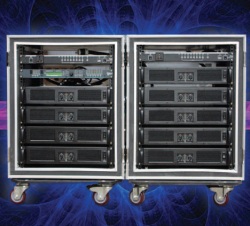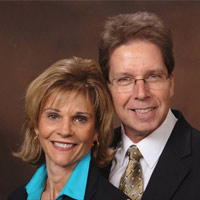How much power can an audio amplifier produce? As you might expect, “it depends.”
I will approach this from two angles—in theory and in practice. This article will deal with the theory. Part 3 will show how things play out in the real world.
Importance Of Efficiency
Amplifiers don’t make power. They convert it. Any audio power that comes from your amplifier must in turn come from the utility outlet that it is connected to. This is why the wire gauge of the line cord matters, and why long extension cords can be a problem.
I showed in part 1 how the power equations calculate the power from the voltage and current, or from the voltage and the load resistance.
These simple forms assumes a purely resistive load. That’s good, because that is how amplifiers are usually tested to determine their power rating.
This is the “apparent power” from the source. Apparent power (in volt-amperes) assumes that the voltage and current are in phase, which is only the case for a purely resistive load. The actual power in watts is likely less than the apparent power in volt-amperes given the nature of real-world loads. I’ll assume a resistive load for now and use watts as the unit.

The power equation says that the maximum continuous power from a 120-volt RMS, 15-amp outlet is 1,800 watts. Substitute a 20-amp circuit breaker and the maximum continuous power is 2,400 watts. Note that 20-amp circuits require special outlets and plugs. Since we are talking about theoretical maximums, I will assume a 20-amp circuit.
If the amplifier were 100 percent efficient, it could produce 2,400 watts (34 dBW) of audio power from the 120-volt, 20-amp outlet. The conversion efficiency of modern switch-mode amplifiers (Class D and its variants) can exceed 80 percent, meaning that an amplifier rated at 2 kW continuous is a possibility.
In effect, the largest amplifiers can produce sine waves that are very close in voltage, current and power to a household electrical circuit in the USA – an incredible achievement in amplifier evolution. Of course utility power is a 60 Hz sine wave. Music and speech signals are broad band, and will produce considerably less power than a pure sine wave due to their higher crest factor.
Let’s go with this theoretical 2,400-watt amplifier (34 dBW) for now. The wattage puts the best face on the power rating (and looks good on the spec sheet). The dB rating (level) is much more useful to the system designer. But how much power can you really expect from the amplifier? As I showed in Part 1, this “best case” rating provides a reference that must be de-rated by the system designer.
What Do We Really Get?
The amplifier’s job is to accurately reproduce the signal voltage presented to its input. It’s not technically correct to call it a power amplifier, because the output power has nothing to do with the input power – only the input voltage.





















